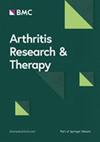揭示不同疾病状态下系统性红斑狼疮的转录组特征和失调通路
IF 4.9
2区 医学
Q1 Medicine
引用次数: 0
摘要
本研究旨在阐明系统性红斑狼疮(SLE)患者的转录组特征和失调通路,尤其关注那些在疾病缓解期间持续存在的转录组特征和失调通路。我们对外周血单核细胞(PBMC)进行了大量 RNA 序列分析,这些细胞来自一个定义明确的群体,包括 26 名符合低狼疮疾病活动状态(LLDAS)标准的缓解期患者、76 名疾病复发期患者和 15 名健康对照组。为了阐明与不同疾病状态相关的免疫特征变化,我们进行了大量分析,包括识别差异表达基因和通路,以及构建蛋白质-蛋白质相互作用网络。与疾病活动状态相比,缓解期的几个转录组特征有所恢复,包括浆和细胞周期特征的下调以及淋巴细胞的上调。然而,特定的先天性免疫反应特征,如干扰素(IFN)特征和参与染色质结构修饰的基因模块,在不同的疾病状态下持续存在。药物再利用分析发现,某些药物类别可以针对这些持续存在的特征,从而有可能防止疾病复发。我们的全面转录组学研究揭示了系统性红斑狼疮在活动期和缓解期的基因表达特征。发现缓解期持续存在的基因表达模块可能会揭示这些患者易复发的潜在机制,为他们的治疗提供有价值的见解。本文章由计算机程序翻译,如有差异,请以英文原文为准。
Unraveling transcriptomic signatures and dysregulated pathways in systemic lupus erythematosus across disease states
This study aims to elucidate the transcriptomic signatures and dysregulated pathways in patients with Systemic Lupus Erythematosus (SLE), with a particular focus on those persisting during disease remission. We conducted bulk RNA-sequencing of peripheral blood mononuclear cells (PBMCs) from a well-defined cohort comprising 26 remission patients meeting the Low Lupus Disease Activity State (LLDAS) criteria, 76 patients experiencing disease flares, and 15 healthy controls. To elucidate immune signature changes associated with varying disease states, we performed extensive analyses, including the identification of differentially expressed genes and pathways, as well as the construction of protein-protein interaction networks. Several transcriptomic features recovered during remission compared to the active disease state, including down-regulation of plasma and cell cycle signatures, as well as up-regulation of lymphocytes. However, specific innate immune response signatures, such as the interferon (IFN) signature, and gene modules involved in chromatin structure modification, persisted across different disease states. Drug repurposing analysis revealed certain drug classes that can target these persistent signatures, potentially preventing disease relapse. Our comprehensive transcriptomic study revealed gene expression signatures for SLE in both active and remission states. The discovery of gene expression modules persisting in the remission stage may shed light on the underlying mechanisms of vulnerability to relapse in these patients, providing valuable insights for their treatment.
求助全文
通过发布文献求助,成功后即可免费获取论文全文。
去求助
来源期刊

Arthritis Research & Therapy
RHEUMATOLOGY-
CiteScore
8.60
自引率
2.00%
发文量
261
审稿时长
14 weeks
期刊介绍:
Established in 1999, Arthritis Research and Therapy is an international, open access, peer-reviewed journal, publishing original articles in the area of musculoskeletal research and therapy as well as, reviews, commentaries and reports. A major focus of the journal is on the immunologic processes leading to inflammation, damage and repair as they relate to autoimmune rheumatic and musculoskeletal conditions, and which inform the translation of this knowledge into advances in clinical care. Original basic, translational and clinical research is considered for publication along with results of early and late phase therapeutic trials, especially as they pertain to the underpinning science that informs clinical observations in interventional studies.
 求助内容:
求助内容: 应助结果提醒方式:
应助结果提醒方式:


